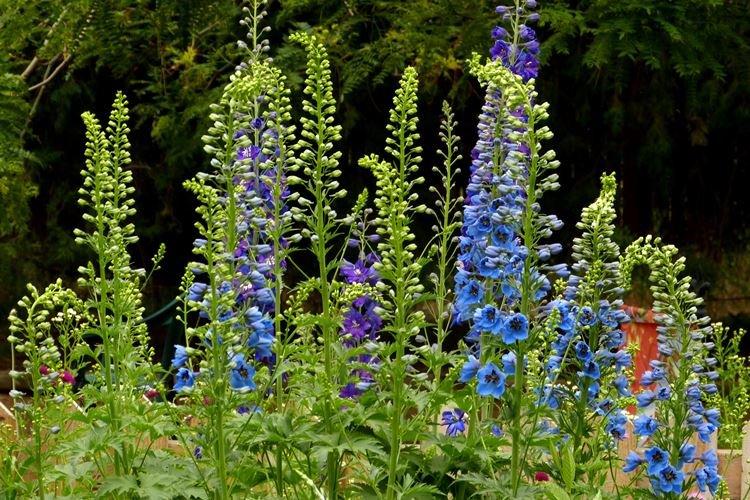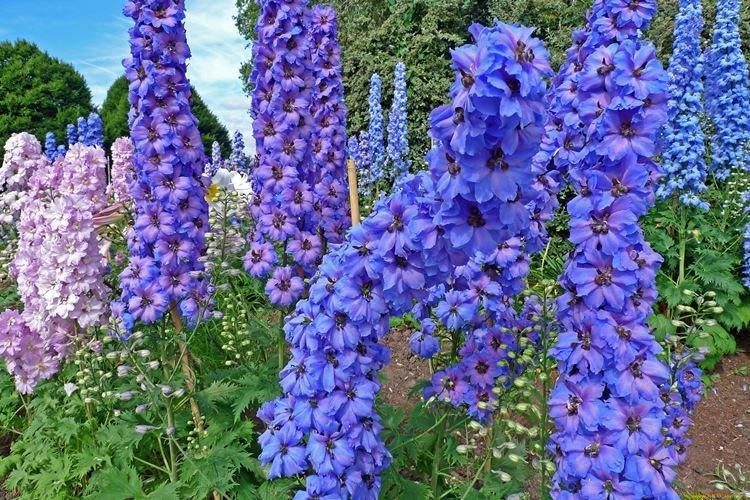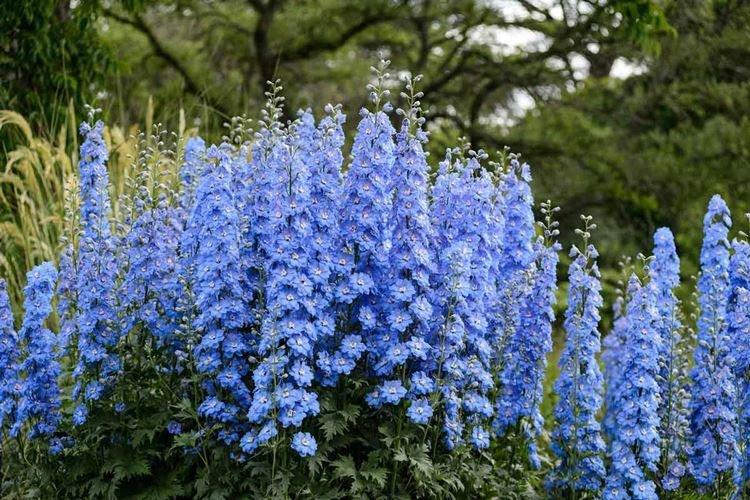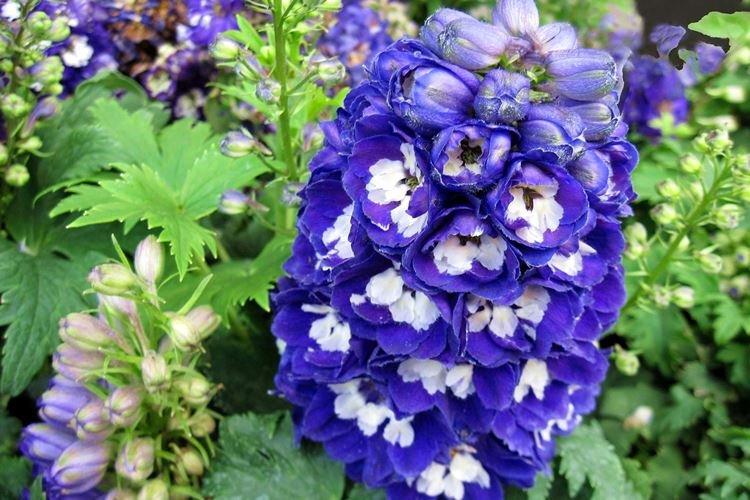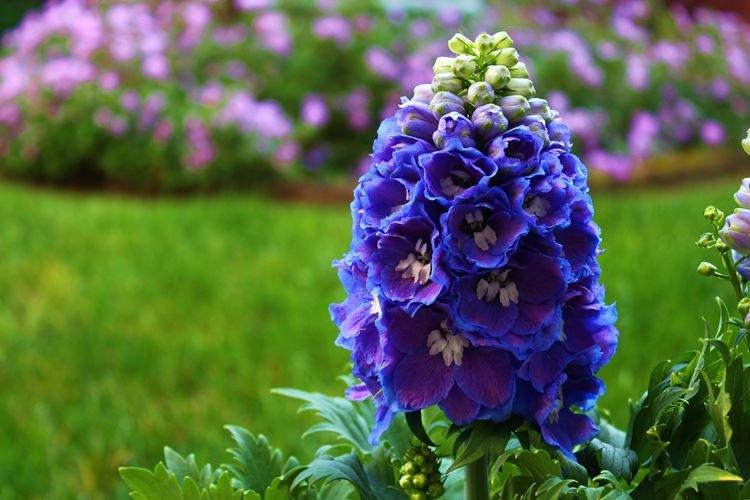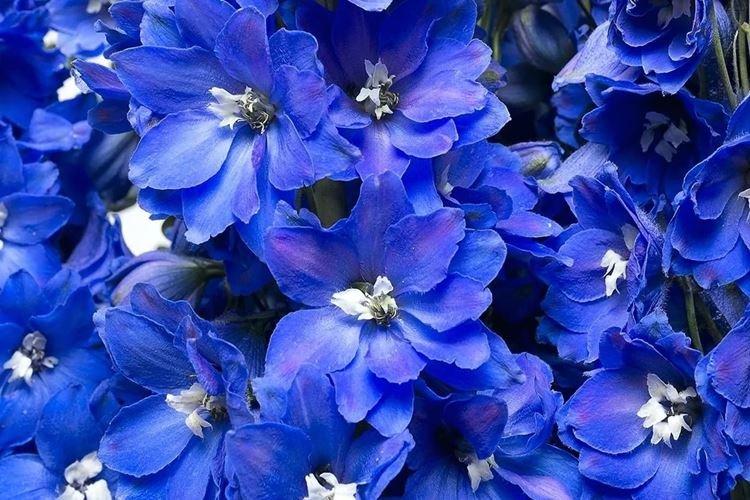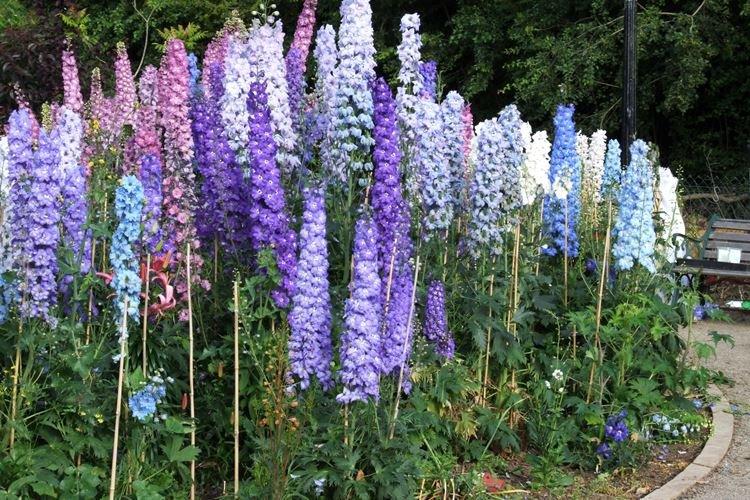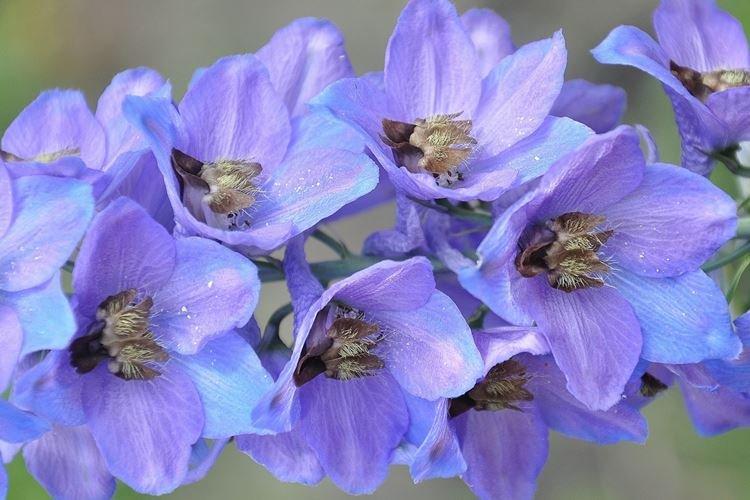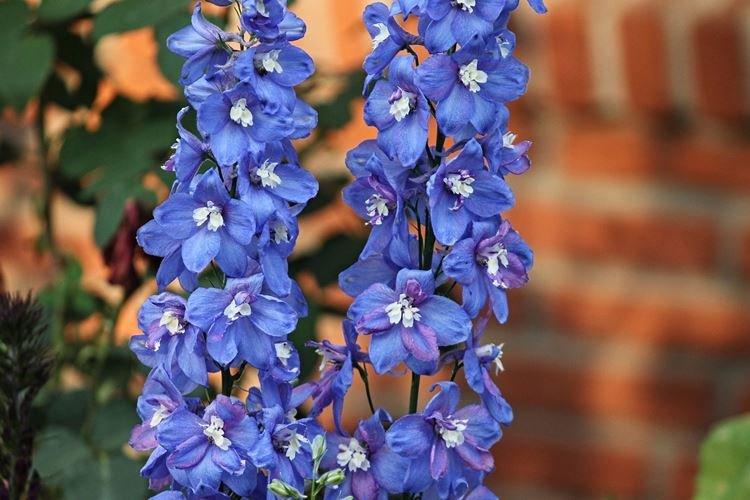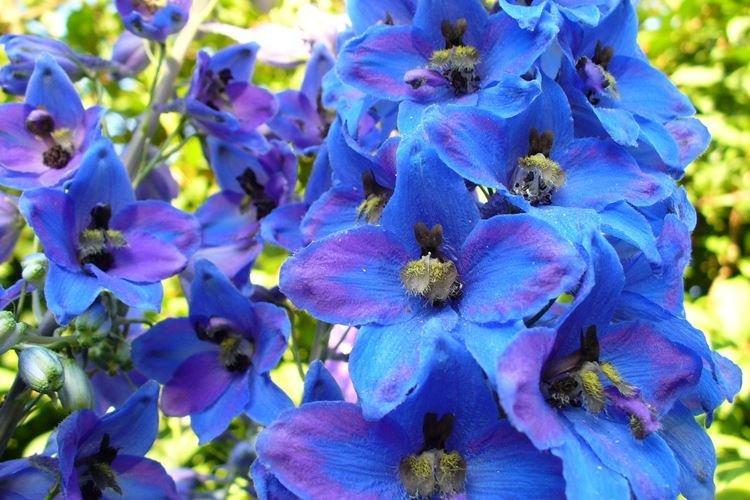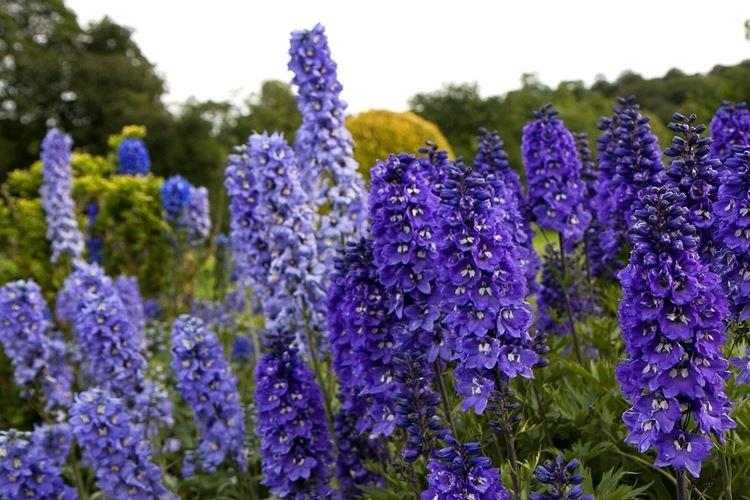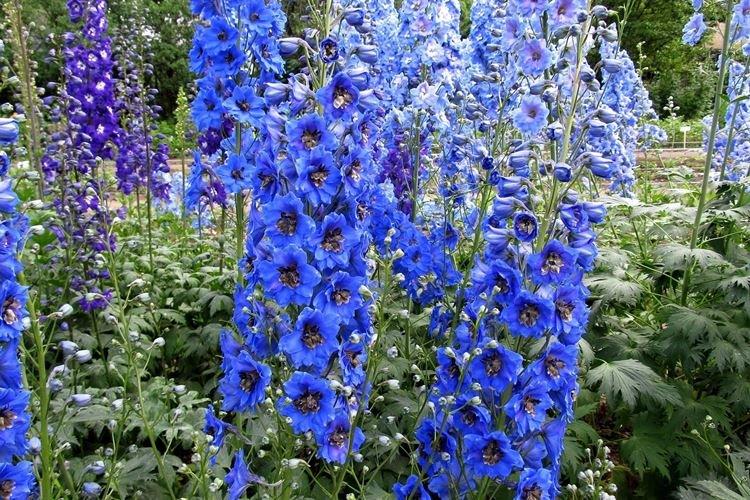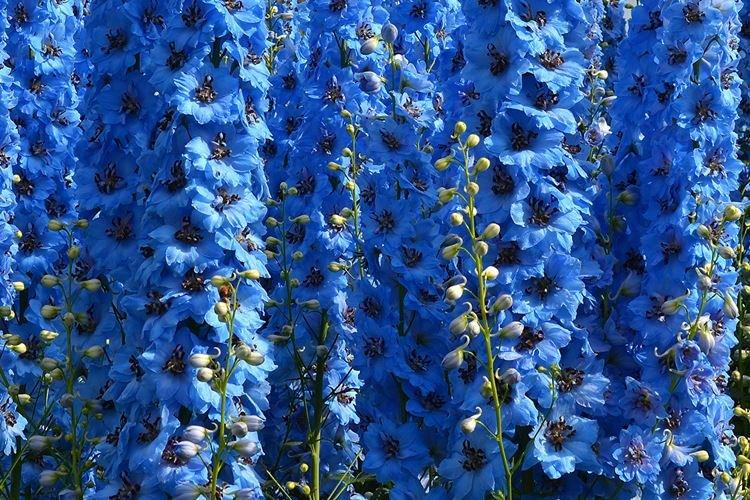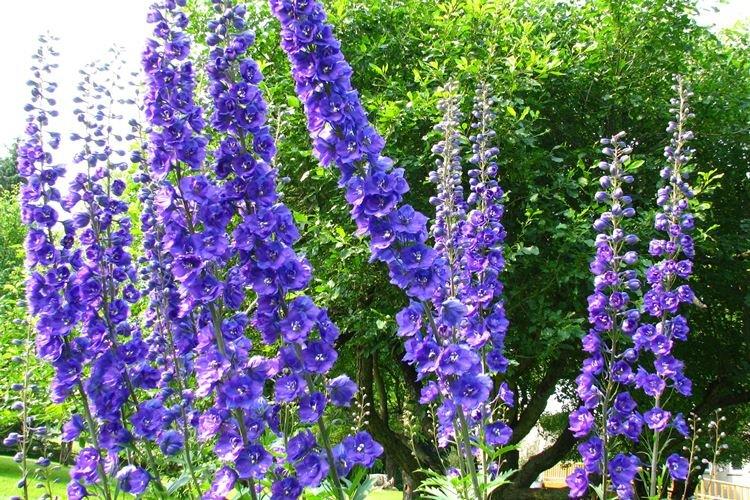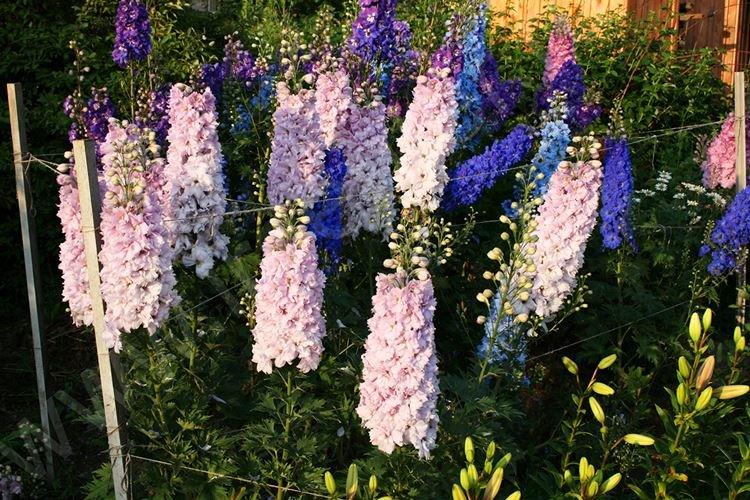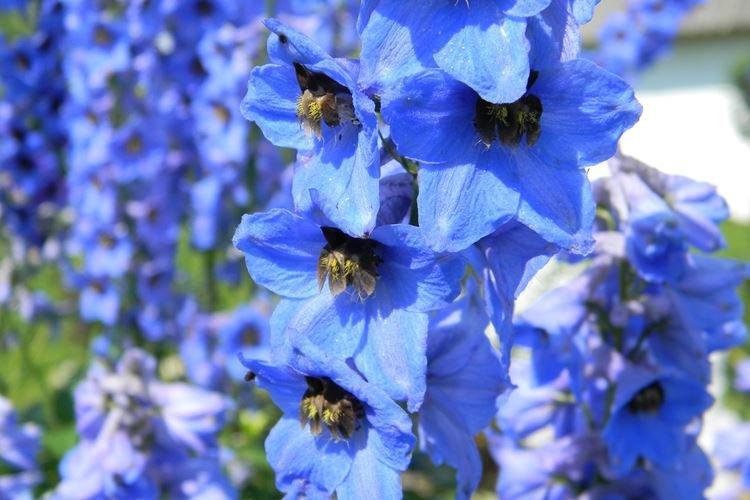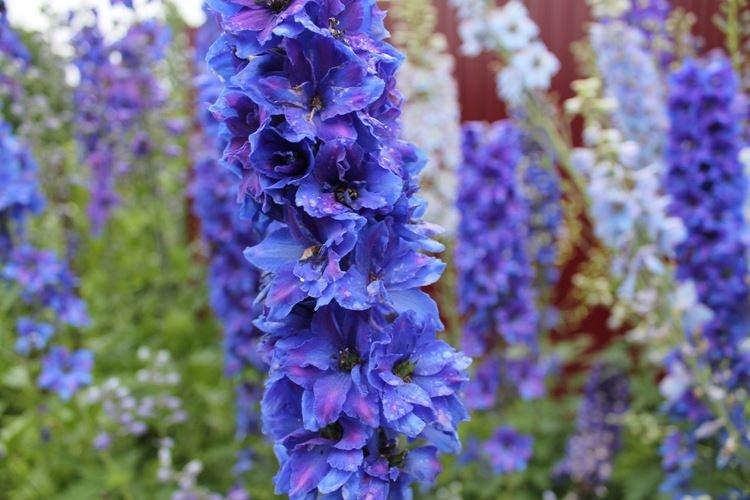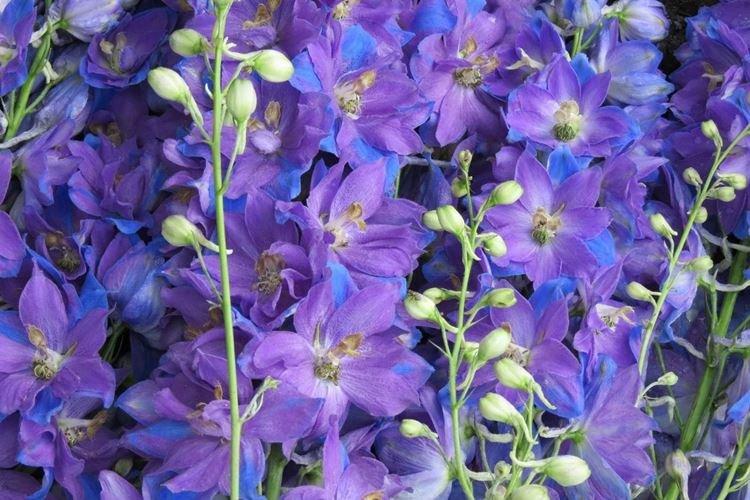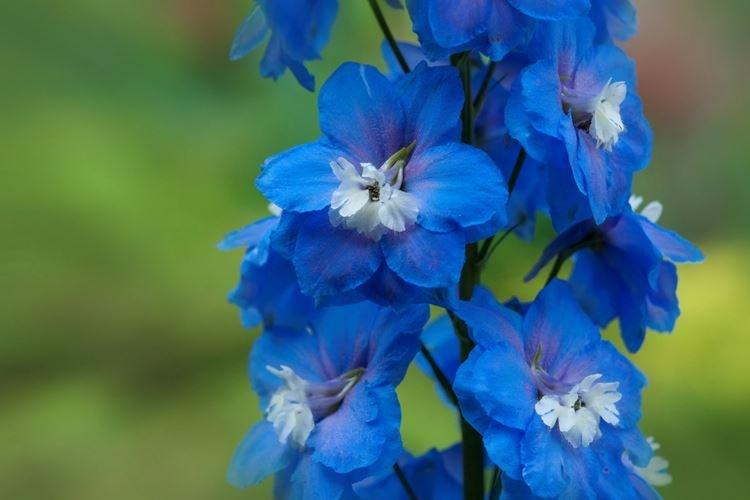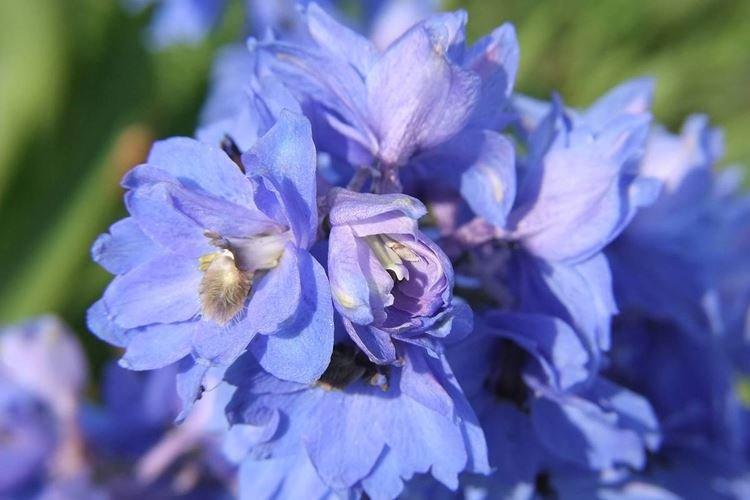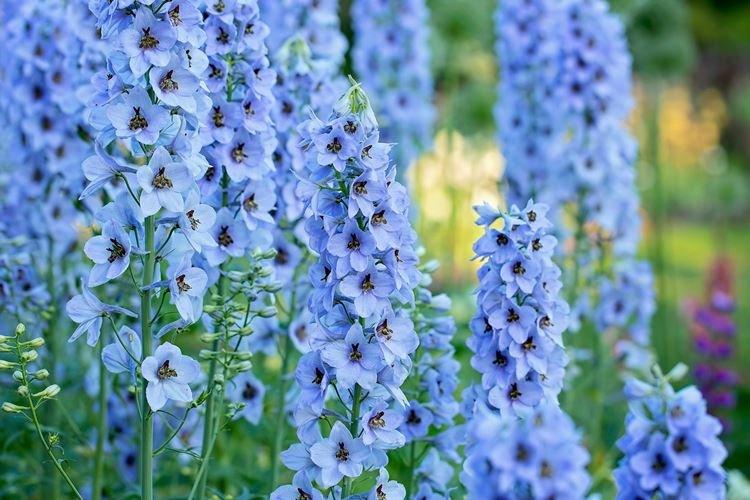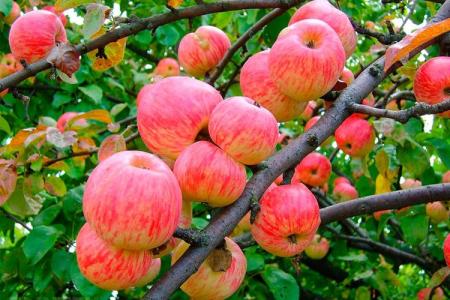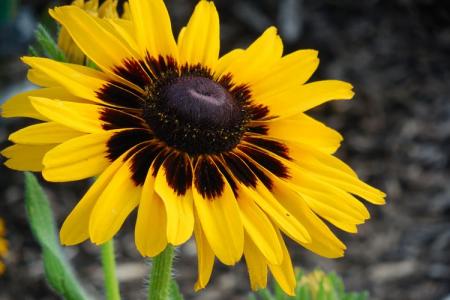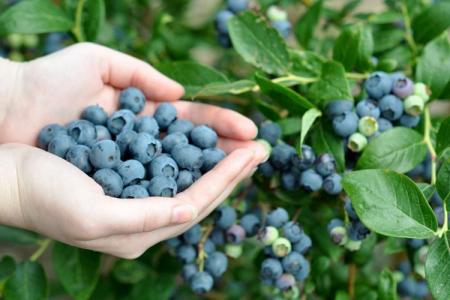
The blue-violet "oceans" of the delphinium fill fields, gardens and landscape compositions. Florists could not pass by large and bright inflorescences, and now they are already decorating thousands of sites around the world. We will tell you how to grow a delphinium, what conditions it needs and what problems you may face!
general information
According to legend, the talented Greek sculptor grieved so much about the deceased beloved that he created her sculpture and revived her. The gods did not forgive him for his antics and turned into a dolphin. The revived girl grieved at the seaside, but the dolphin was able to find her and brought a flower as a gift.
Delphinium is a buttercup flower and there are over 400 species in the genus. In China alone, there are over 150 of them, and there are also Asia, Africa, and the Northern regions. There are more perennials among them, but there are also annual varieties.
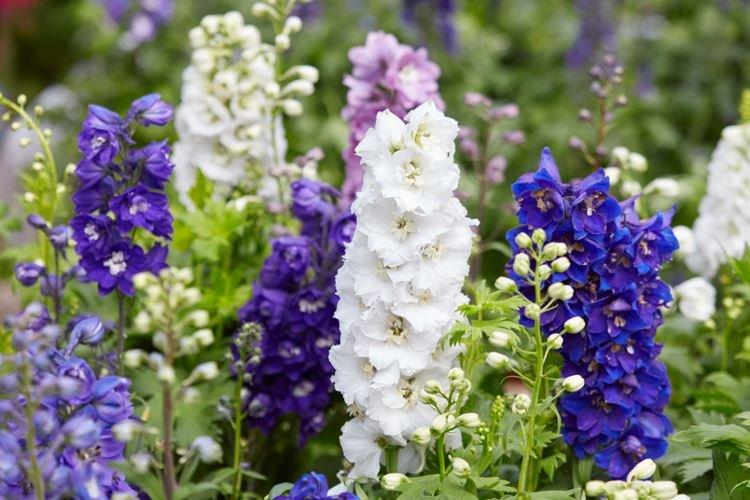
The main feature of the delphinium is its large pyramidal inflorescences, densely covered with small flowers. Most often there are blue varieties, but there are still white and lilac varieties. They all have an upper spur that can grow taller than 5 cm.
Delphinium blooms in the summer, and in the warmth in the south - in the spring and again in the fall. A resistant plant easily tolerates frosts, and in the cold season it can withstand temperatures down to -40 degrees. Thaws, which literally flood the rhizome, pose a much greater threat.

Delphinium varieties
There are dozens or even hundreds of varieties of delphiniums ranging in height from 40 to 200 cm. But their unique structure of lush inflorescences remains unchanged, for which gardeners fell in love with them!
Field delphinium
Large 2-meter stems are covered with dense inflorescences of blue, blue and white shades. Among them there are two-color and double varieties, as well as rare pink and lilac delphiniums.
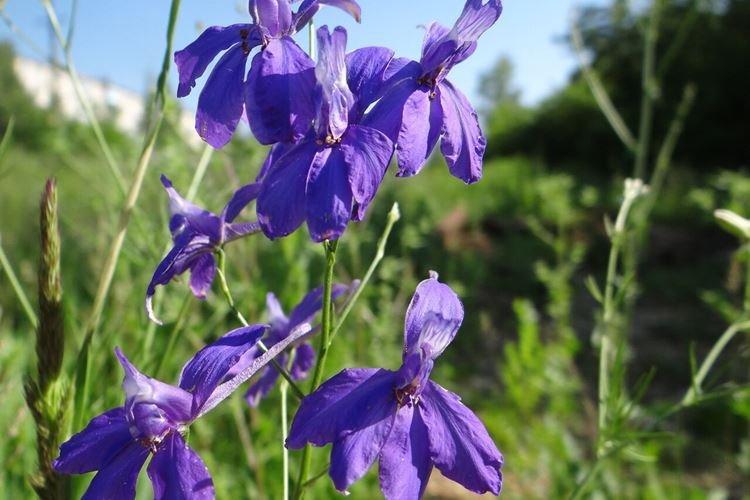
Delphinium high
A wild and less decorative variety that is often found in Siberia and Mongolia. The herbaceous flower thrives even in the mountains and, due to its unique characteristics, is often used in breeding.
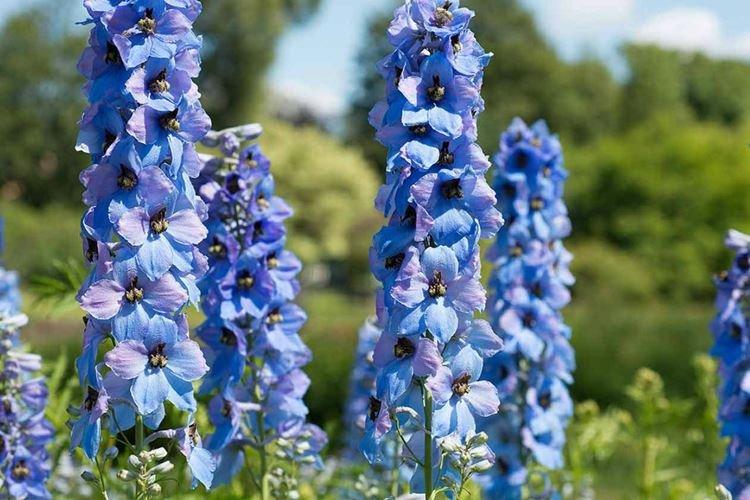
Delphinium Ajax
The decorative hybrid has turned out as a result of selection, due to which there are many different varieties and shades. These include dwarf delphiniums up to 30 cm, double flowers and other interesting varieties.
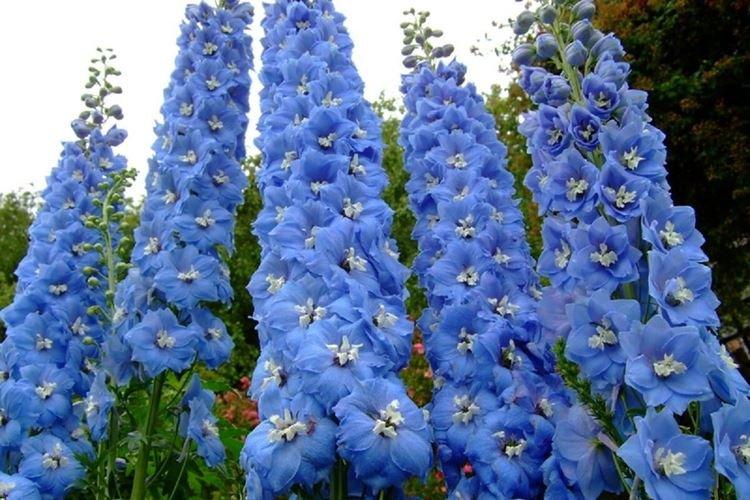
Delphinium New Zealand
The hybrid garden variety is resistant to disease, especially against the background of most of the much more sensitive species. Inflorescences are covered with large double or semi-double flowers up to 9 cm in diameter.

Delphinium large-flowered
The meadow flower thrives on rocky slopes, but rarely grows above 50 cm. It has very bright blue flowers, collected in unremarkable rare panicles.
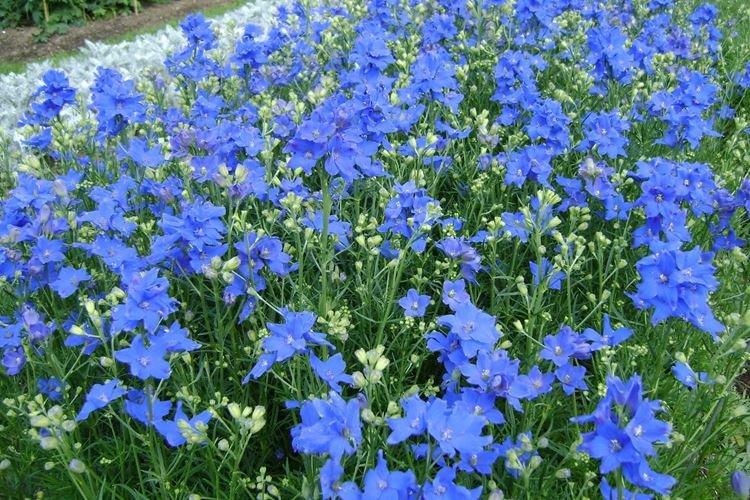
Delphinium Bruno
Medium-sized perennial species, up to 50 cm, popular in landscaping stone gardens. Paniculate inflorescences are relatively small - only up to 10 flowers.
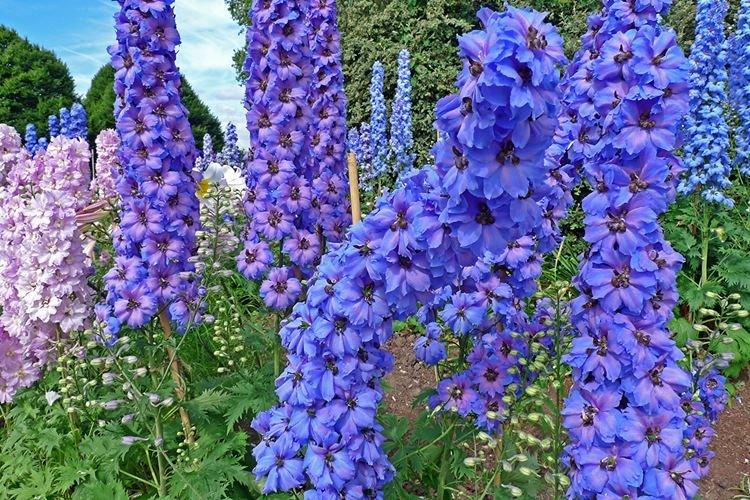
Delphinium pacific
Another popular hybrid species, which is appreciated for its beauty, unusual colors and the possibility of seed propagation while maintaining all varietal characteristics. But such a delphinium is rather painful and short-lived.

Delphinium red
A real Mexican curiosity is almost never found in our latitudes, but certainly deserves attention. Long inflorescences up to 60 cm are covered with large scarlet flowers of 20-30 pieces.
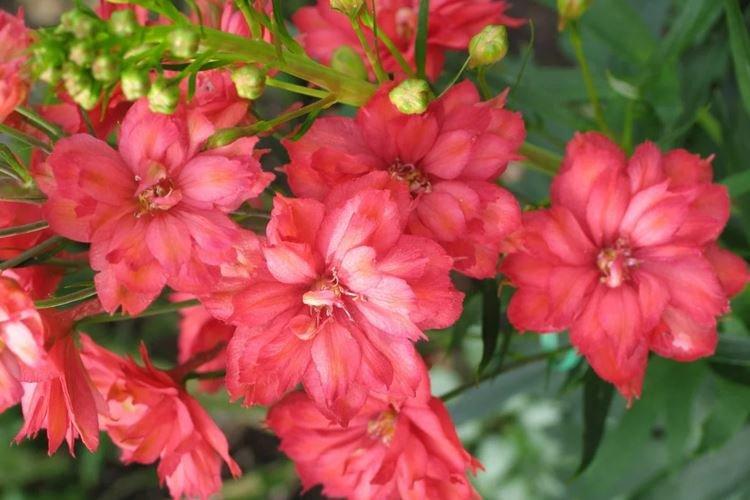
Delphinium Scottish
The main feature of Scottish hybrids is very voluminous double flowers. Among them there are many delicate shades of pink and purple that perfectly complement the landscape.

Delphinium care
Delphinium is difficult to grow, but after that it requires almost no care. The main thing is to choose a fairly dry area and not grow flowers in one place for more than 6 years. In some cases, the recommended period is reduced to 4 years - you need to study the features of the selected species.
Temperature and lighting
Delphinium loves the sun and only feels good in open sunny areas. But tall stems with large and delicate inflorescences need protection from strong gusts of wind. At the same time, on hot summer days, the petals can fade, so you can't do without a few hours of shade in the afternoon.
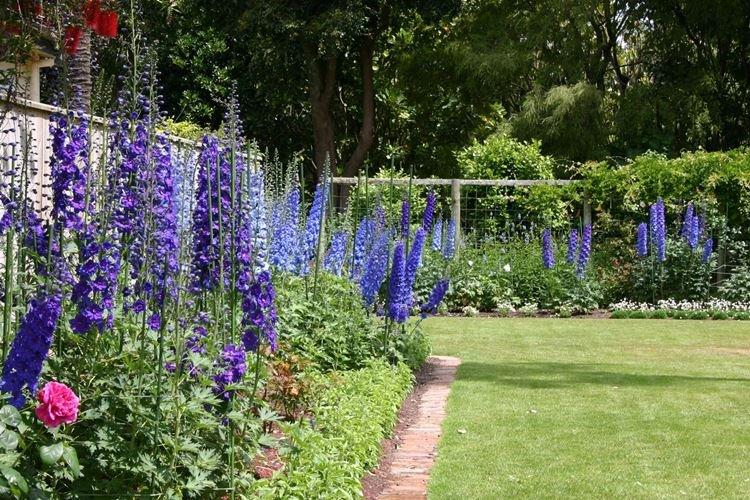
Watering
Delphinium should be watered very carefully, because it has a shallow root system. On dry days, 2 buckets are enough for each flower once a week. If the plant is constantly flooded, it will begin to rot and rot. For the same reason, you cannot plant a delphinium in areas where rain or melt water constantly accumulates.
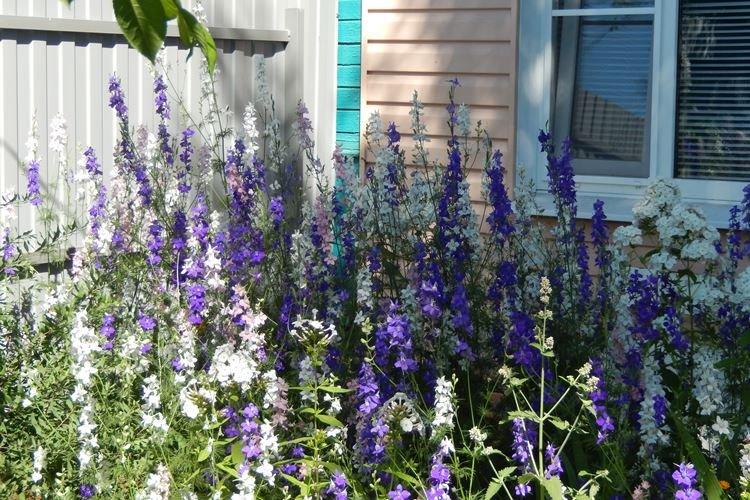
The soil
Delphinium prefers loamy or sandy loamy soils. Before planting, be sure to apply humus and soil well in the fields. Due to the fact that the rhizome is superficial, it must be mulched with peat or humus.

Fertilizers and feeding
In early spring, the delphinium needs to be fed with a mineral complex so that it gets stronger. A dry mixture, dug up to 5 cm with the soil, is suitable.If flowering is not planned this season, you can exclude nitrogen and use potassium phosphates.
The second feeding is carried out after the formation of buds, because a profusely flowering plant needs a lot of resources. It is important to loosen the soil and adhere to the watering regime so that the fertilizers evenly reach the root system.
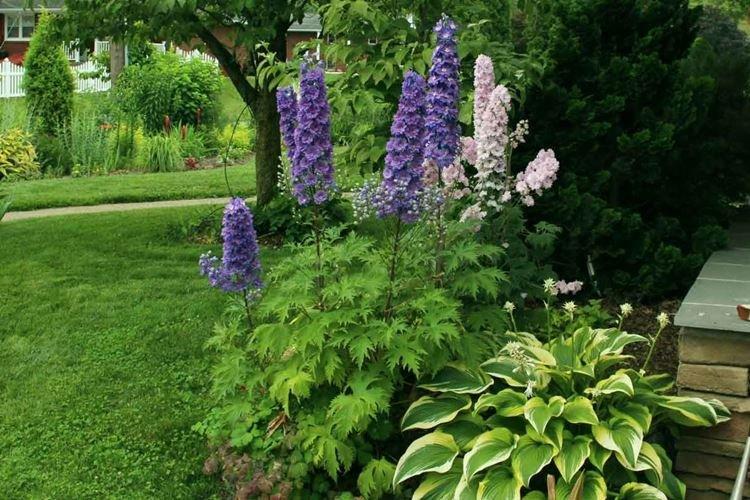
Transplant and reproduction
Growing a delphinium from seeds is cheaper, but longer and more difficult. The seed should be used as soon as possible, otherwise germination is lost when stored in a warm place. Flowers are planted at the end of winter in a loose and moisture-consuming substrate, preheated in a water bath.
Spread the seeds evenly over the container, lightly sprinkle with soil a couple of millimeters, spray and hide under a black film. You can take out the seedlings to the balcony or even refrigerate for the first time. Low temperatures above -5 degrees only stimulate germination.
After a few leaves, choose healthy shoots, plant them separately and put them in a warm place. By May, gradually accustom the seedlings to the wind and the sun. The delphinium is planted in the ground directly with an earthen lump - usually at this time it is already easily removed from the pot. The pit is needed larger - about 40x50 cm in increments of up to 70 cm.

Pruning
In order for the delphiniums to bloom again, after the first flowering, you need to carefully cut the peduncles. At the same time, pruning is the best prevention of viruses, from which the flower often suffers. In the process, they leave about 30 cm above the ground, but it is better not to touch young flowers until next year.
Young shoots are thinned out after transplanting, when they grow up a little. The bush should have up to 5 stems so that they do not hurt and bloom thicker. Tall delphiniums must be tied up because their stems are hollow and rather fragile.

Pest and disease control
Like other moisture-sensitive plants, delphinium often suffers from powdery mildew and other fungi. There are black and ring spots, which need to be radically treated with fungicides. It is important to identify the disease in the early stages, otherwise the flower will no longer be helped.
Due to the fact that the shoots grow close, the brushes are dense, and the air circulates poorly, the delphinium suffers from viruses. These are asteric jaundice and several types of mosaics that pests usually carry. Bacterial wilting and fusarium are common, although young and weakened plants are susceptible to them.
The delphinium is greatly damaged by the larvae, and there is even a delphinium fly, which equips the clutches right in the buds. The leaves are eaten by caterpillars with slugs, and the root system is spoiled by nematodes. Don't forget about common garden problems like mites or aphids!
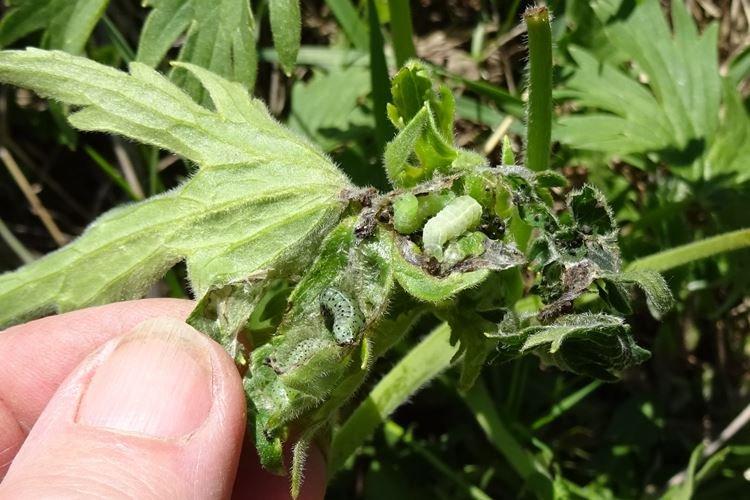
Delphinium - photo
It is impossible to resist the beauty of a flower bed with a delphinium. Just look how impressive they look in landscape design!
